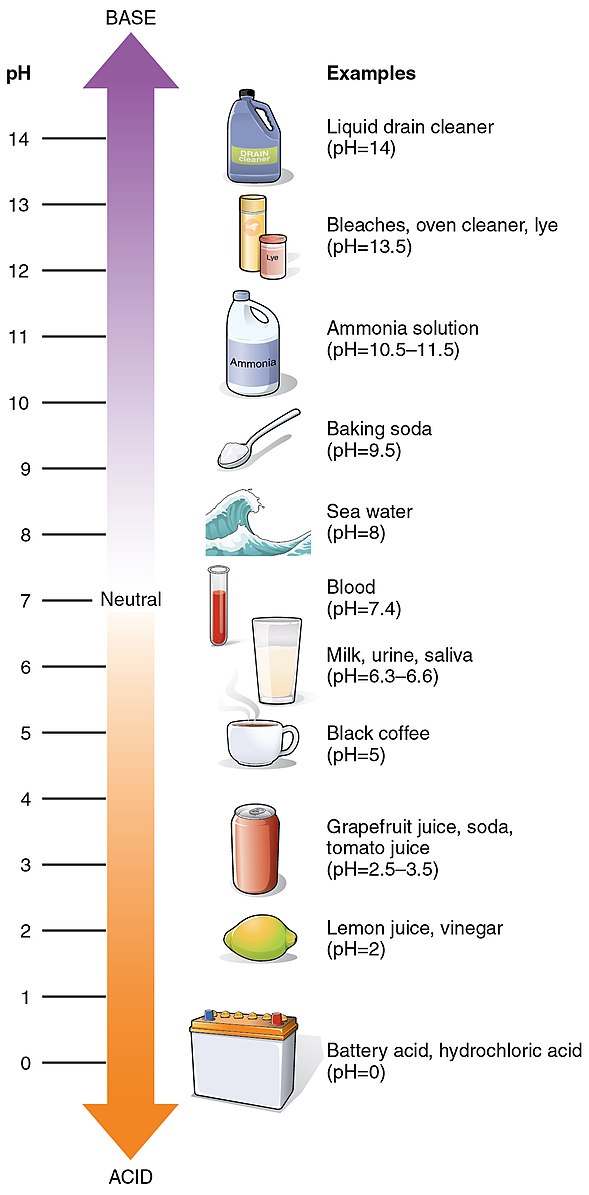The pH of glycerin in water can range from 4.0 to 9.1, depending on the grade of glycerin. This range is influenced by the manufacturing process and the presence of impurities. Understanding the pH of glycerin in water is crucial for various applications, such as DIY projects, cosmetics, and pharmaceuticals.
Understanding the pH Range of Glycerin in Water
Glycerin, also known as glycerol, is a colorless, odorless, and viscous liquid that is widely used in various industries. The pH of glycerin in water can be influenced by several factors, including:
-
Glycerin Grade: The pH of glycerin can vary depending on the grade of glycerin. Crude glycerin, which is a byproduct of the biodiesel industry, often contains impurities such as methanol, water, soaps, and salts, which can lower the pH. On the other hand, USP (United States Pharmacopeia) grade glycerin, which is pharmaceutical grade, has a pH range of 4.0 to 9.1.
-
Manufacturing Process: The manufacturing process of glycerin can also affect its pH. Different production methods, such as saponification, hydrolysis, or transesterification, can result in varying levels of impurities and, consequently, different pH ranges.
-
Impurities: The presence of impurities in glycerin, such as methanol, soaps, or salts, can lower the pH of glycerin in water. Conversely, the presence of certain chemicals or substances in the water can also affect the pH of the glycerin-water mixture.
Importance of Balancing the pH of Glycerin in Water
 Image source: OpenStax College
Image source: OpenStax College
The pH of glycerin in water is crucial for various applications, as it can affect the solubility, stability, and efficacy of the final product. For example, in DIY projects, glycerin is often used as a humectant, emollient, or solvent, and the pH of the glycerin-water mixture can impact the performance and safety of the final product.
Similarly, in cosmetic and pharmaceutical formulations, the pH of glycerin in water can affect the stability and effectiveness of the product. For instance, if the pH is too low (acidic) or too high (basic), it can cause degradation, precipitation, or denaturation of the glycerin or other ingredients.
Balancing the pH of Glycerin in Water
To balance the pH of glycerin in water, you can use various methods, such as:
-
Adding Acid or Base: If the pH of glycerin in water is too low (acidic), you can add a base, such as sodium hydroxide (NaOH) or potassium hydroxide (KOH), to raise the pH. Conversely, if the pH is too high (basic), you can add an acid, such as hydrochloric acid (HCl) or acetic acid (CH3COOH), to lower the pH.
-
Adjusting Temperature: The pH of glycerin in water can also be affected by temperature. Adjusting the temperature can help balance the pH, but it’s essential to monitor the pH value frequently and ensure that the temperature does not cause degradation or other undesirable effects.
-
Using Buffer Solutions: Buffer solutions can be used to maintain a specific pH range in the glycerin-water mixture. These solutions contain a combination of a weak acid and its conjugate base, or a weak base and its conjugate acid, which helps to resist changes in pH.
It’s important to note that the pH of glycerin in water should not be too extreme, as it can cause degradation, precipitation, or denaturation of the glycerin or other ingredients. Therefore, it’s recommended to adjust the pH gradually and monitor the pH value frequently using a pH meter or pH indicator strips.
Factors Affecting the pH of Glycerin in Water
The pH of glycerin in water can be affected by various factors, including:
-
Contaminants: Impurities in the glycerin, such as methanol, soaps, or salts, can lower the pH of the glycerin-water mixture.
-
Water Quality: Chemicals or substances present in the water, such as chlorine, fluoride, or heavy metals, can also alter the pH of the glycerin-water mixture.
-
Mixing Ratio: The ratio of glycerin to water can affect the pH of the mixture. A higher concentration of glycerin may result in a different pH range compared to a lower concentration.
-
Temperature: As mentioned earlier, temperature can influence the pH of the glycerin-water mixture.
To ensure the stability and safety of the final product, it’s crucial to use high-quality glycerin and water, and to filter or purify them if necessary.
Conclusion
The pH of glycerin in water is an essential factor to consider for various applications, such as DIY projects, cosmetics, or pharmaceuticals. The pH range of glycerin in water can vary from 4.0 to 9.1, depending on the grade of glycerin and the presence of impurities. To balance the pH of glycerin in water, you can use various methods, such as adding acid or base, adjusting the temperature, or using buffer solutions. However, it’s crucial to monitor the pH value frequently and to use high-quality glycerin and water to ensure the stability and safety of the final product.
References:
– Quora – How does pH affect water solubility of glycerin?
– PubChem – Glycerin
– Nature – Moisture retention of glycerin solutions with various concentrations
– NCBI – Electrical Characterization of Glycerin: Water Mixtures
– Wikipedia – Glycerol
– ProSites – Glycerin Specifications
